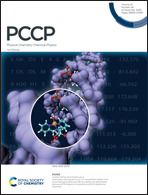Designed Ag-decorated Mn:ZnO nanocomposite: facile synthesis, and enhanced visible light absorption and photogenerated carrier separation†
Abstract
A series of ZnO-based complex architectures including Mn-doped ZnO, Ag/ZnO and Ag-decorated Mn:ZnO nanocomposites were fabricated by a facile polymer network gel method. The photocatalytic performance of the as-synthesized products was evaluated by the degradation of methylene blue (MB), methyl orange (MO) and rhodamine B (RhB) under simulated sunlight irradiation. The Mn:ZnO/Ag photocatalyst achieves the superior photodegradation efficiency, which is three times higher than that of pure ZnO and two times that of the Ag/ZnO composite. Our results demonstrate that the significantly enhanced photocatalytic properties of Mn:ZnO/Ag are due to the synergetic effects of both Mn doping and Ag decoration. The possible photocatalytic mechanism of Mn:ZnO/Ag for degradation of organic dyes is proposed. The transformation from Mn3+ to Mn2+, the increase of surface defects, and the improvement of the crystal quality are the crucial factors for the enhancement of the photocatalytic properties. This study provides an effective approach to overcome the response limitation of ZnO-based photocatalysts in the visible region and realize efficient photogenerated carrier separation.



 Please wait while we load your content...
Please wait while we load your content...